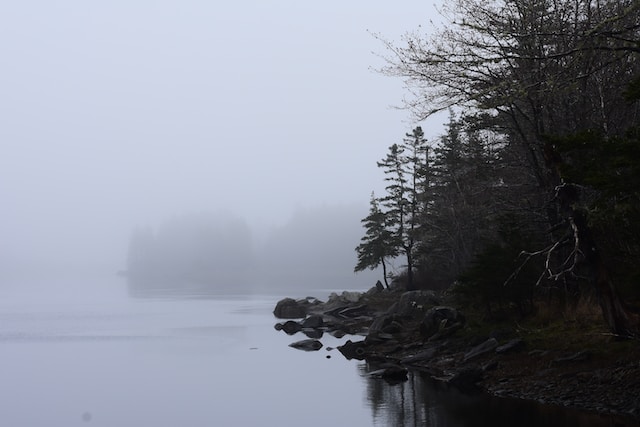A new provincial wilderness area in Guysborough County will protect old-growth forest and animal and fish habitat.
Archibald Lake Wilderness Area covers 684 hectares and includes old-growth forest, hardwood drumlins, lakes and wetland. Agriculture Minister and MLA for Guysborough-Tracadie Greg Morrow made the announcement on August 28, in Sherbrooke on behalf of Environment and Climate Change Minister Timothy Halman.
“Today is a great day for the people of Guysborough County and all Nova Scotians, and I am thrilled to make this announcement which will help ensure a sustainable and healthy future for our province, our people and our economy,” said Minister Morrow. “The Archibald Lake area – with its lakes, hardwood hills, and old-growth forest – is a beautiful, scenic and pristine natural gem. By protecting it forever, we are ensuring generations of Nova Scotians will be able to experience and benefit from all it has to offer including the health benefits of spending time in natural areas.”
The new wilderness area includes three lakes: Archibald, McDonald and Rocky, which feed Archibald Brook, a tributary of St. Marys River. Nearly 300 hectares of the protected area is old hardwood forest, as defined by the Old-Growth Forest Policy for Nova Scotia.
The area is habitat for many species, such as Canada warbler and endangered mainland moose, that benefit from older forests. Protecting the area also helps maintain water quality and fish habitat, benefitting fish species including brook trout and Atlantic salmon. The area is a popular spot for hunting and recreational trout fishing, which are both permitted in wilderness areas.
The Province is currently consulting with Nova Scotians to help develop a protected areas strategy. The strategy will outline how the Province will achieve its 2030 land and water conservation goal and identify next steps. Nova Scotians can provide their ideas and feedback by October 6 at: http://ns20by2030.ca/ .
Today is a very good day for the rare species and old-growth forests of Archibald Lake Wilderness Area. We are so happy that this special place is now protected, and we thank the Nova Scotia government for their leadership to conserve this ecological hotspot. Our fieldwork at Archibald Lake Wilderness Area over the past three years has identified 37 rare species, including seven that are listed under the Endangered Species Act. The salmon, turtles, moose, lichens, songbirds, bats, and forests will all benefit from this important conservation decision
-Chris Miller, Executive Director, Canadian Parks and Wilderness Society – Nova Scotia Chapter
Quick Facts:
- the Environmental Goals and Climate Change Reduction Act has a goal to protect 20 per cent of Nova Scotia’s land and water by 2030, including working with the Mi’kmaq to create Indigenous protected and conserved areas in the province
- the Province’s climate change plan, Our Climate, Our Future: Nova Scotia’s Climate Change Plan for Clean Growth, has five actions to protect and restore natural areas and ecosystems so they can help minimize climate impacts
- about 13.2 per cent of Nova Scotia’s land is protected; protection of the remaining lands in the 2013 Parks and Protected Areas Plan will increase this to 14 per cent
- Nova Scotia’s protected areas conserve the province’s biodiversity, unique habitats, coastlines, and natural landscapes and features while providing places for people to connect with nature, and play an essential role in fighting climate change
- protected areas are part of the conservation zone in the triad model of ecological forestry recommended in the Independent Review of Forest Practices; the zone currently covers 35 per cent of Crown land.









